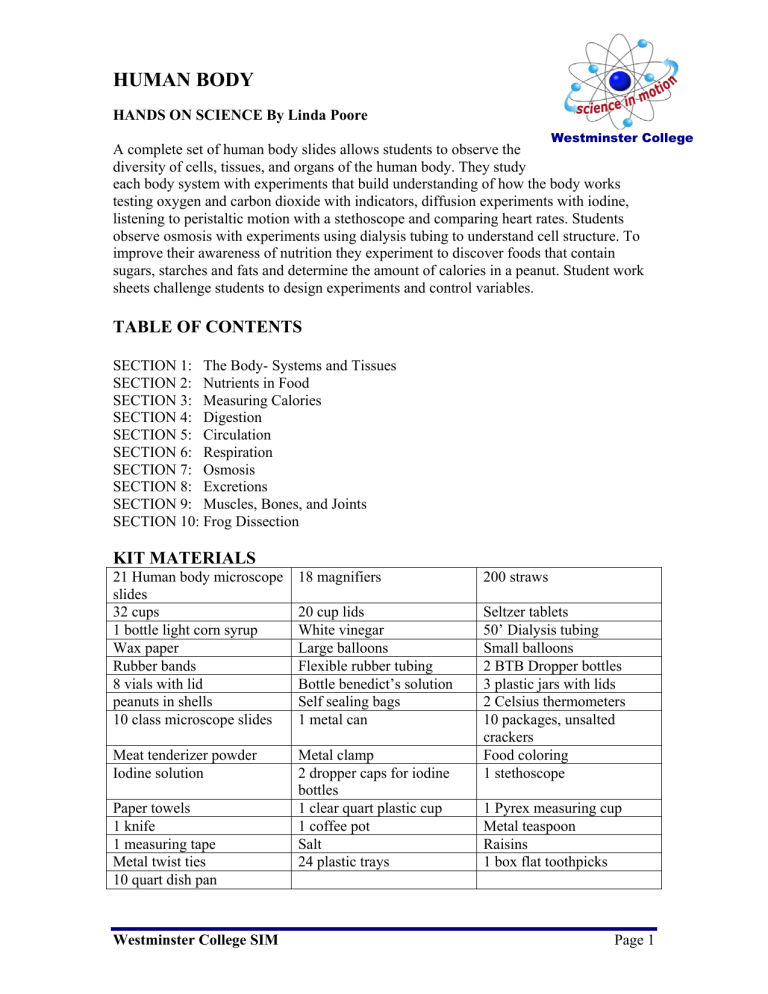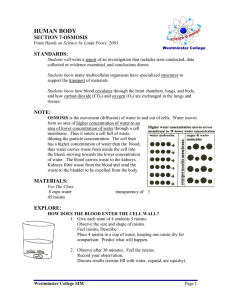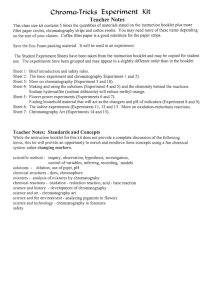HUMAN BODY

HUMAN BODY
HANDS ON SCIENCE By Linda Poore
A complete set of human body slides allows students to observe the diversity of cells, tissues, and organs of the human body. They study
Westminster College each body system with experiments that build understanding of how the body works testing oxygen and carbon dioxide with indicators, diffusion experiments with iodine, listening to peristaltic motion with a stethoscope and comparing heart rates. Students observe osmosis with experiments using dialysis tubing to understand cell structu re. To improve their awareness of nutrition they experiment to discover foods that contain sugars, starches and fats and determine the amount of calories in a peanut. Student wo rk sheets challenge students to design experiments and co ntrol variables.
TABLE OF CONTENTS
SECTION 1: The Body- Systems and Tissues
SECTION 2: Nutrients in Food
SECTION 3: Measuring Calories
SECTION 4: Digestion
SECTION 5: Circulation
SECTION 6: Respiration
SECTION 7: Osmosis
SECTION 8: Excretions
SECTION 9: Muscles, Bones, and Joints
SECTION 10: Frog Dissection
KIT MATERIALS
21 Human body microscope slides
18 magnifiers 200 straws
32 cups
1 bottle light corn syrup
Wax paper
Rubber bands
8 vials with lid
20 cup lids
White vinegar
Large balloons
Flexible rubber tubing peanuts in shells Self sealing bags
10 class microscope slides 1 metal can
Seltzer tablets
50’ Dialysis tubing
Small balloons
2 BTB Dropper bottles
Bottle benedict’s solution 3 plastic jars with lids
2 Celsius thermometers
10 packages, unsalted crackers
Meat tenderizer powder
Iodine solution
Food coloring
1 stethoscope
Paper towels
1 knife
1 measuring tape
Metal twist ties
10 quart dish pan
Metal clamp
2 dropper caps for iodine bottles
1 clear quart plastic cup
1 coffee pot
Salt
24 plastic trays
1 Pyrex measuring cup
Metal teaspoon
Raisins
1 box flat toothpicks
Westminster College SIM Page 1








